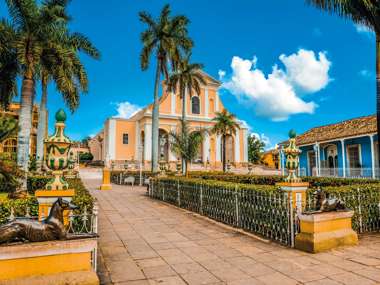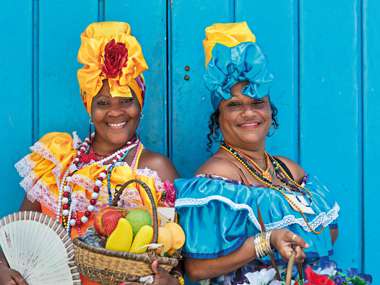A personal account from Cuba
This was my first visit to Cuba, despite dealing with the island as a destination for nearly 20 years, so as you can imagine, I was looking forward to the visit immensely.
Our first port of call was the capital, Havana. Whilst the city has all the features one associates with Cuba; the classic American cars, salsa bars and communist-era imagery, there is so much more to the place. Fidel Castro began a long term regeneration of Havana and the result is beautiful architecture in combination with areas that are quite ramshackle, infused with modern 21st-century buildings. It soon becomes apparent to the first time visitor that Havana feels both friendly and safe, and I found the diversity and vibrancy of the city hugely appealing.

From Havana, we made our way to Cienfuegos (stopping at the roadside for delicious local mangoes en route) a colonial town, Cienfuegos is very pleasant and really quite chic with a main boulevard and a square with a large old-style theatre.

After leaving Cienfuegos, we made our way to Trinidad, perhaps the “jewel in the crown” of Cuba. A lovely old town, with cobbled streets, old buildings, many bars and restaurants, two large plazas and the ubiquitous churches. As well as tobacco production, Trinidad is reliant on tourism but manages to do this without the place feeling overly “touristy.” In the evenings, tourists will join locals in dancing in the main square and again, the overriding feeling of friendliness and safety is present and a jolly good time is had by all.

We made our way from Trinidad to the island of Cayo Santa Maria via the Manaca Iznaga Tower which is 45 metres tall and is located in the Valley de los Ingenios or Valley of the Sugar Mills and after a relatively tough climb, you are rewarded with a lovely panoramic view of the surrounding area.

Cayo Santa Maria is an island off the coast of Cuba linked to the mainland by a 48km causeway. This is a marvellous feat of engineering and again, Fidel Castro was behind its implementation and the whole project was completed in ten years. The island also has an airport and is populated by large international style hotels and we spent two very pleasant days here.
We undertook a short trip to Remedios where we visited a disused sugarcane mill. There is a steam train at the factory which will operate short trips to and from the centre of Remedios and even if this is not running, there is plenty of rolling stock on display to satisfy any rail enthusiasts. The town of Remedios is small with an interesting church and large square and a nice spot to sit, relax and watch the world go by!
The next stop on our tour after leaving the island was Santa Clara, one of the most important places in Cuba in terms of the Revolution. We visited the mausoleum/museum of “Che” Guevara and whatever one’s opinion of “Che”, the imagery of him in relaxed mode in the museum was extremely “feel-good.” The mausoleum contains the bodies of a number of revolutionaries and an eternal flame that was lit by Fidel Castro in 1997 and for me it was a privilege to stand before Ernesto Guevara’s last resting place.

Our final destination on the tour was Viñales where we visited the Indian Cave, a large limestone cave, and took a short boat ride. The environs of the town are very scenic with many hills and we had a chance to explore this area. On departure from Viñales, we stopped in Soroa at an orchid farm and at a medium sized waterfall.

We closed our tour back in Havana by having a ride in a classic American car, which was great fun!

In summing up, we spoke many times to our guide about the future and he said he was not worried and reminded us that “Cuba is Cuba” and that would not change. We had a really interesting journey and I would urge anyone to go and if you remember that things do not always go as planned, but to take this in your stride, you will have a fantastic time on this most delightful of islands.





